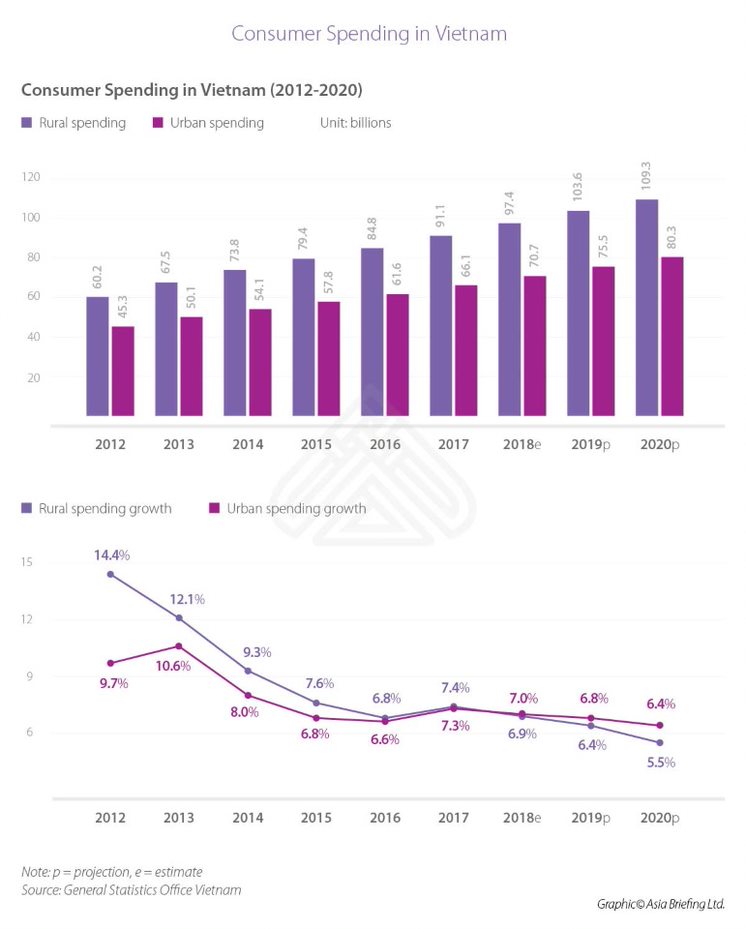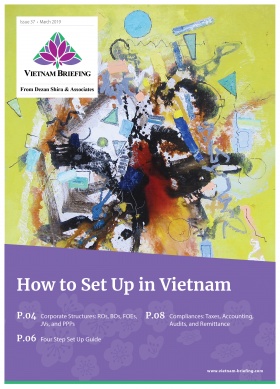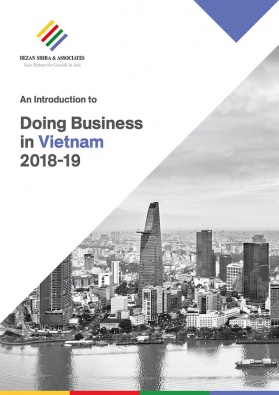Investing in Vietnam’s Consumer Market: An Overview
Vietnam’s consumer market is constantly evolving, driven by changing consumer lifestyles, income, and behavior. The country has experienced a steady progression of disposable income in recent years, which can be seen in its rapid growth of total consumer expenditure from US$80 billion to US$171 billion between 2010 and 2018.
This shows that Vietnamese consumers have more money to spend. In fact, within the first nine months of 2018, the country experienced an 11.3 percent of increased spending. This growth in consumer activity has undoubtedly created openings for businesses to provide new services and products that are available for consumers.
Evolution of the consumer market in Vietnam
The steady flow of foreign investment into Vietnam has, and will continue to, propel economic growth. This growth has significantly increased local spending power, with an increase in the expenditure for both urban and rural consumers.
Vietnam’s consumer base is a young demographic between the ages of 25 and 54 years old, accounting for 45.56 percent of the population in 2017. Vietnam’s consumer demographic is similar to other countries in the region, such as Singapore with 50.53 percent of its population within the age range of 25-54 years old in 2017. However, it is still relatively younger than developed markets, such as Japan, which has 37.5 percent of its population between 25-54 years in 2017.
Assessing industry opportunities
Consumer spending in Vietnam has seen growth in numerous industries, which has changed the market. For example, there is growing demand for high quality education; students enrolled in higher education went from 16 percent in 2005 to 29 percent in 2015. The needs of Vietnamese people are changing and can be seen in their demand for higher standards across not only education, but health and leisure, to name a few.
In 2017, Vietnam’s healthcare expenditure was approximately US$16.1 billion and is projected to grow by US$22.7 billion by 2021. Further, the Ministry of Industry and Trade predicts Vietnam will be among of the top three countries in Asia for the highest growth rate of the food and beverage industry by 2020. This shows people are more willing to indulge in simple everyday pleasures.
Evaluating locations for investment
Investors should consider a multitude of factors when surveying a potential investment site. Spending habits are influenced by region because of various levels of wealth and disposable income, as well as cultures and preferences in each area. Ho Chi Minh City, for example, is made up of seven urban districts, all with varying demographics.
Role of e-commerce
The rising role of e-commerce in Vietnam is reshaping consumption – with the number of internet users rising, people are turning to online retailers. Currently, of Vietnam’s 92 million population and 55.19 million internet users, 35.4 million people use e-commerce as a method of shopping. The total revenue for e-commerce transactions has reached US$2.2 billion and is expected to reach US$4 billion by 2021.
Doing business in Vietnam
The urbanization of Vietnam’s population has generated greater spending power in the country. However, there are a few key factors that pose a challenge when doing business in Vietnam. It is important to understand cultural barriers that affect contract negotiations and enforcement, conducting appropriate partner vetting within opaque operating conditions, and being mindful of time delays when transporting goods due to infrastructure difficulties.
About Us
Vietnam Briefing is produced by Dezan Shira & Associates. The firm assists foreign investors throughout Asia from offices across the world, including in Hanoi and Ho Chi Minh City. Readers may write to vietnam@dezshira.com for more support on doing business in Vietnam.
- Previous Article 越南转让定价概述
- Next Article 越南对外商投资职业院校的新要求








